The ExactMetrics date comparison feature helps you easily identify trends or determine the effectiveness of changes made to your WordPress site over time.
Follow this guide to learn how to compare dates in your ExactMetrics reports.
Prerequisites:
- You’re an ExactMetrics Plus user or higher.
- Your ExactMetrics is installed and activated.
- Google Analytics is already authenticated on your website.
Getting Started
In ExactMetrics’s overview report, you’ll see a month-over-month percentage by default, indicating an overall positive or negative trend of your website based on the number of sessions, page views, average session duration, and bounce rate.

To gain even more insights, you can enable ExactMetrics’s date comparison feature to take a closer look at what’s actually driving the changes.
First, navigate to ExactMetrics » Reports and click on the date picker to view date range options of your reports.
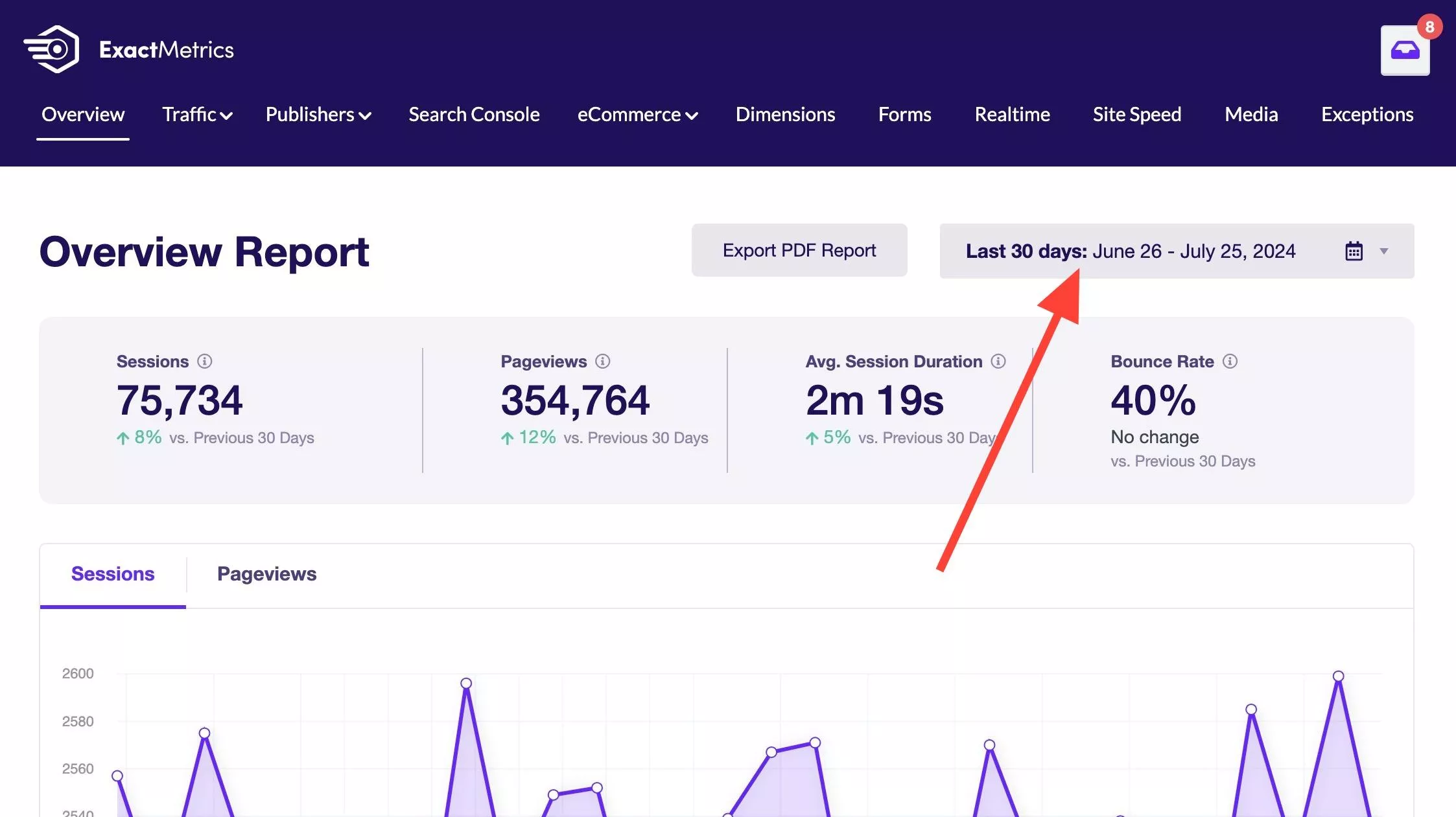
Turn on the Compare to Previous option.
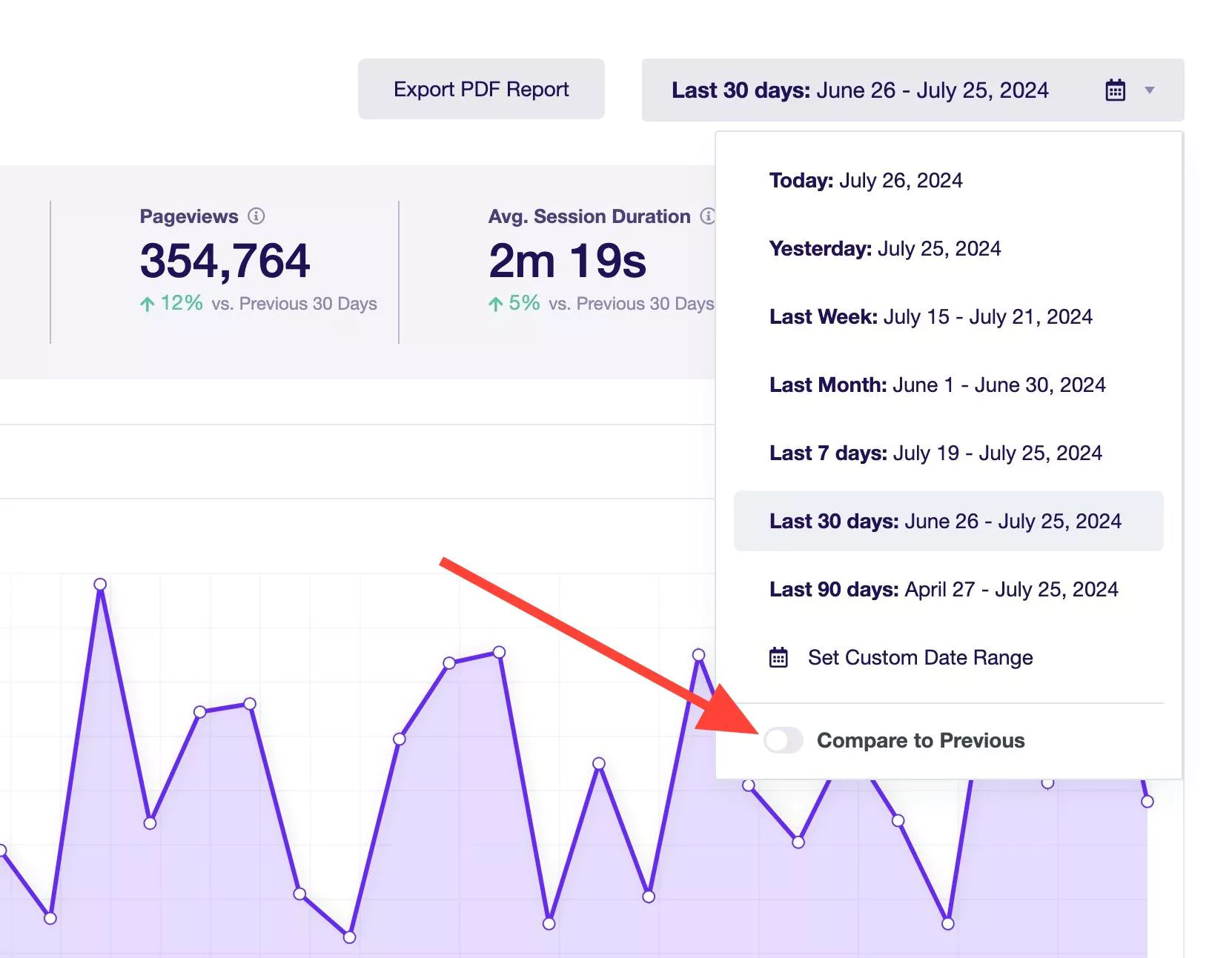
Once enabled, ExactMetrics reports will refresh you’ll start to see current and previous data for the currently selected date range. By default, ExactMetrics will show last 30 days, but you can change this as needed.
With this, you’re able to compare data in the Overview, Traffic, Publisher, eCommerce, Dimensions, Forms or Media reports. Once you navigate away from any of these reports, the Compare to Previous option will be disabled until you re-activate it again.
How To Compare Data
While viewing ExactMetrics graph, you can hover over a data point to see numbers of the current and previous dates.
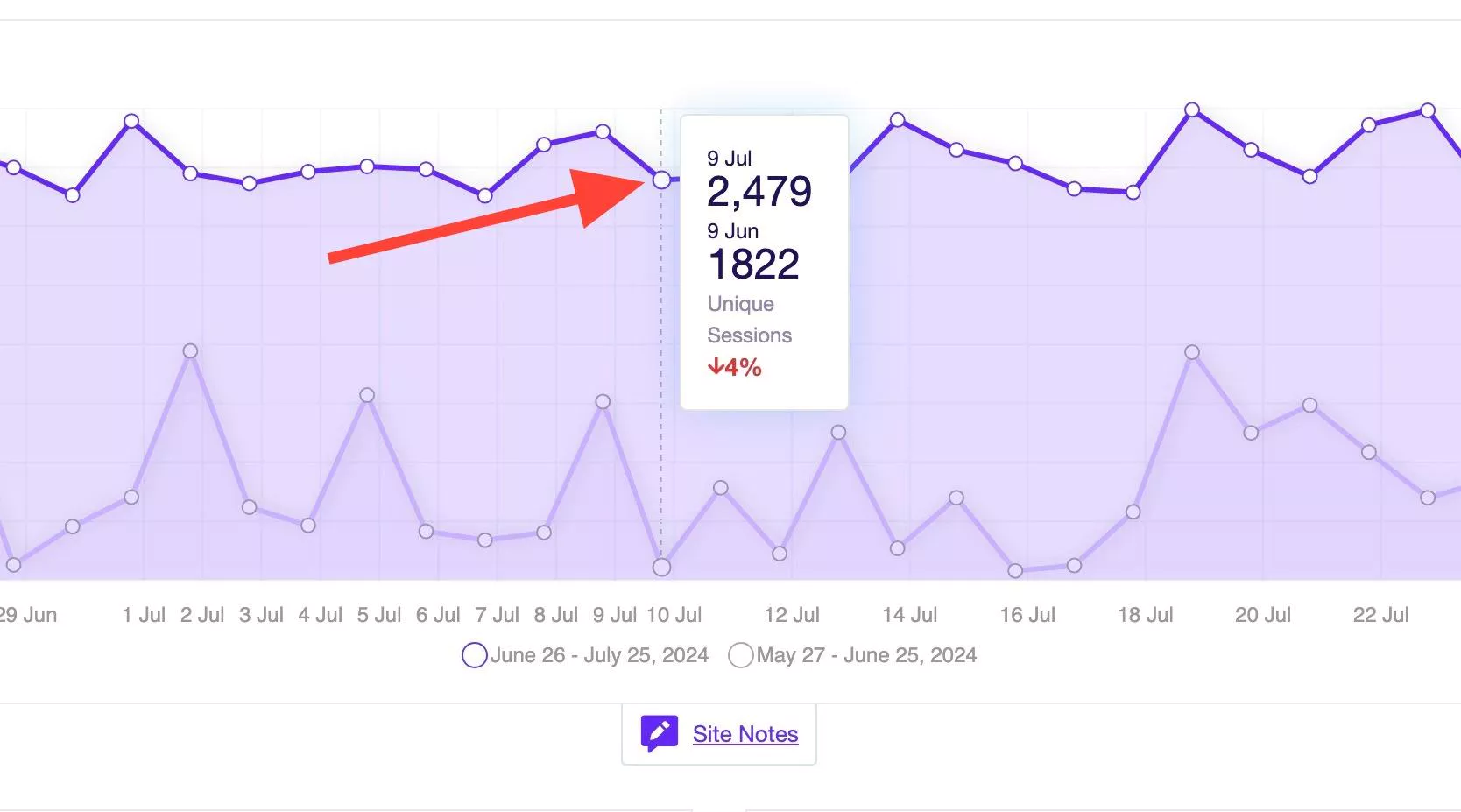
You can toggle the date legends at the bottom of the graph at any time to show or hide current or previous data from the graph.
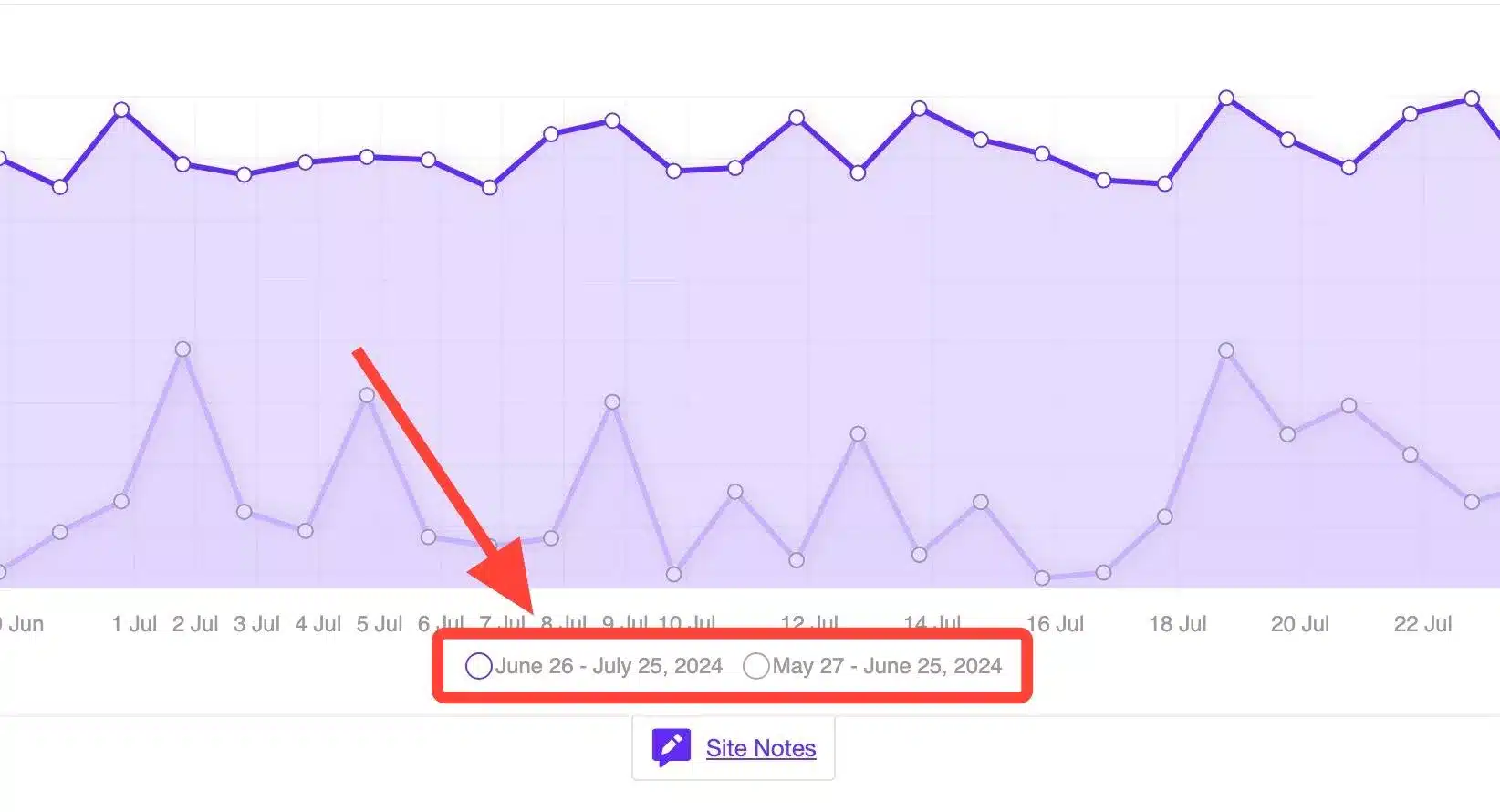
For other types of reports, data will be separated per metric for easy viewing.
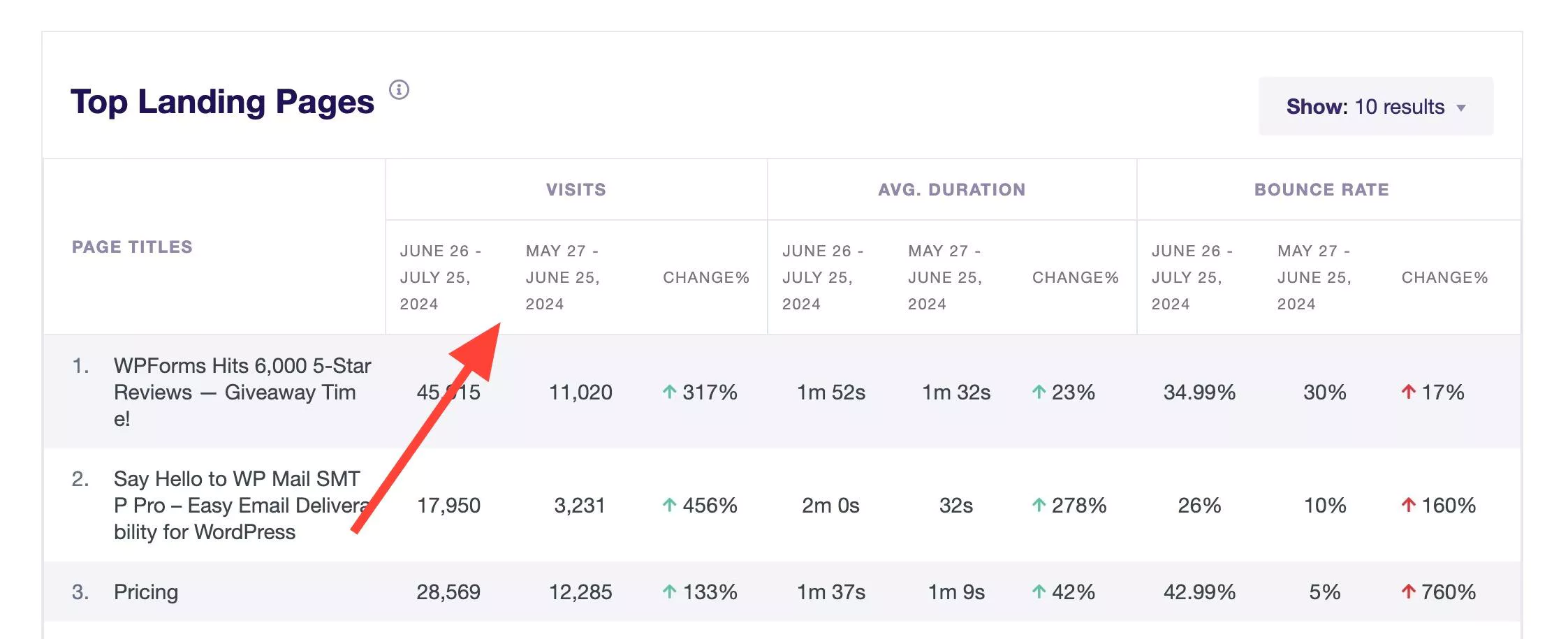
Or reports will have the data separated out per period, labelled as Date 1 or Date 2.
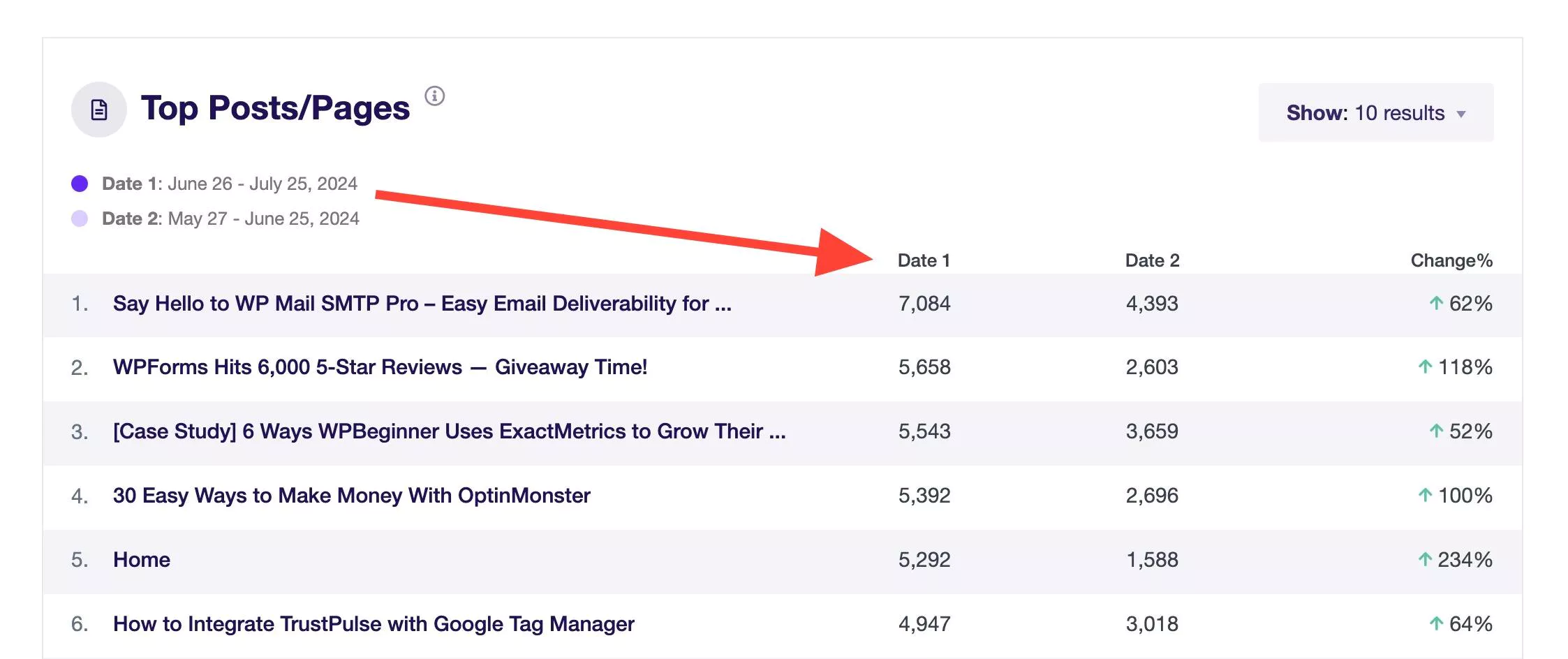
When comparing data to previous periods, it’s important to check for changes in your user acquisition channels, user behavior, and total conversions.
You can do this by:
- Utilizing the Traffic reports to see where your site visitors are originating from, whether it’s through organic or paid search, social media, referrals, direct traffic, or any active campaigns.
- Examining the Publishers report, which includes insights like Top Landing Pages and Demographics. If configured, the Dimensions report will display behavior based on user role, post tag or category, author, etc. Observe how visitors are engaging with your site and which content they are most interested in.
- Analyzing outbound, affiliate, and download clicks in the Publisher reports, as well as other reports such as eCommerce, Forms, Dimensions, and Media (video views), to understand the actions taken by your site visitors, in alignment with your WordPress site goals.
For the most accurate analysis, use consistent date ranges and consider seasonal factors that might affect your data (e.g., holiday sales).
By comparing dates in your ExactMetrics reports, you will be able to:
Measure impact by analyzing user engagement metrics such as bounce rate, session duration, etc., before and after a website update or after launching a specific campaign to evaluate its success.
Identify trends by reviewing total transactions and revenue across different periods to pinpoint peak sales times or identify seasonal patterns.
And that’s all! You’ve learned how to use the ExactMetrics date comparisons feature.
Next, learn how to easily keep track of website updates or changes to your WordPress using Site Notes: Getting Started with Site Notes.

